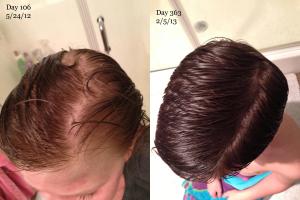3. Steroids make your skin drier over time
Over time, corticosteroids negatively affect normal functioning of the adrenal glands, which are ultimately responsible for sebaceous gland activity through its production of androgen. If the adrenal glands are ultimately responsible for our oil production but are damaged by steroids, we are left with drier, itchy, irritated skin. Although excess oil can be a drag, oil functions to lubricate and keep our skin cells youthful and healthy.
In my teenage years, I was a very oily skin type. Every cosmetic I bought was dedicated to mattifying my skin. I blotted every half hour, especially during the summer and no matter which powder or clay mask or potion I used, my pores (actually, sebaceous glands) produced oil at lightning speed. This drastically changed 3 years ago, which also happens to be when I begun using corticosteroids (Clobestol Propionate) on a more regular basis to control skin reactions I was having to cat dander.
Since then, it’s been very strange watching by skin change from a walking oil mine to dried paper mache – two polar extremes. A few months into using Clobestol (2010), I noticed my skin was more like a “normal” skin type during the summer – less oily overall, still an oily T-zone but more balanced. I celebrated and thought that the skin gods were finally responding to my prayers. I accredited my full-time air-conditioned desk job and believed my cool, dry workplace to be my saving grace. No doubt it helped, as the next summer (2011) I was worse off – too dry all over and very irritable.
Approximately 2 years after my first course of regular use in Winter 2011, I begun to notice that dry, red, irritated patches were developing on my cheeks. I blamed the cooler, drier weather and slapped on more moisturizer and more steroids. Summer 2012, I was dry and blamed it on my old age. I figured that I’ve always had eczema and so I will have to live with being irritated and reactive, and just so happens that I’m drier too. Fall 2012 was even worse. My face became very dry, tight, hot and scaly. It stung to put even the mildest cleansers (CeraVe, Cetaphil) on face.
The best medical explanation I had was steroid-induced Rosecea. I soon found out about “Steroid-Induced Rosecea-like Dermatitis” or SIRD for short. You can read about that in this medical journal. I’ll be doing a summary post on this article coming up soon. If you Google “side effects of corticosteroids,” one of them is perioral dermatitis, which is what my skin (and many others from the ITSAN forum) was slowly morphing into.
4. Spreading facial eczema is a common side effect of corticosteroids.
Your doctor, at least mine, has not mentioned this one before. Many on the ITSAN forum have mentioned that their doctors have only ever brought up “Perioral Dermatitis,” as it’s called, when the occasion occurs after having prescribed steroids for months or even years. The issue with this is it seems to happen to too many steroid-users. (This begs the question: So why are doctors waiting to say something to their patients?! And why are they prescribing something that often worsens the issue?)
Perioral dermatitis is an extremely delicate skin issue to manage, as I speak from experience. The key word here is “manage”; it won’t ever fully recover until you are fully healed from withdrawal. Many people going through withdrawal (knowingly or not) experience irritated, weepy, cracked skin and/or red around the mouth, eyes and cheek area – even if steroids were never used on the face. Remember – the skin is a single organ and users experience “metastatic” dermatitis on areas that were never directly in touch with their creams and ointments.
You will learn in Dr. Rapaport’s medical literature about Red Face Syndrome, which is a direct result of steroid use. Studies show that steroid use leading to perioral dermatitis can be a short as two months, although the average is 1-2 years and more than 6 years is common. In the 20 years that I’ve been using steroids, I begun experiencing the first buds of perioral dermatitis about 3 years ago when I started using Clobestol (which I had 4 years before) on a more regular basis to control inflammation. I used it very very sparingly, though more frequently – one week course every 3-4 weeks, which is the recommended use deemed as “safe” by doctors and dermatologists. It was only 5-6 months after that that my skin started morphing into what is now perioral dermatitis.

